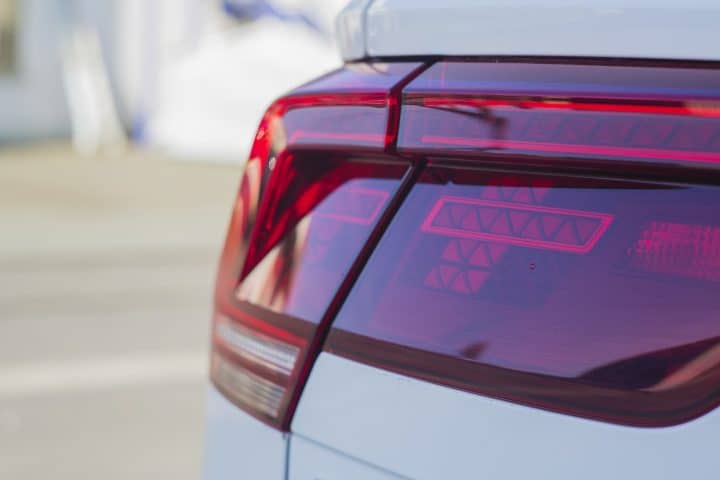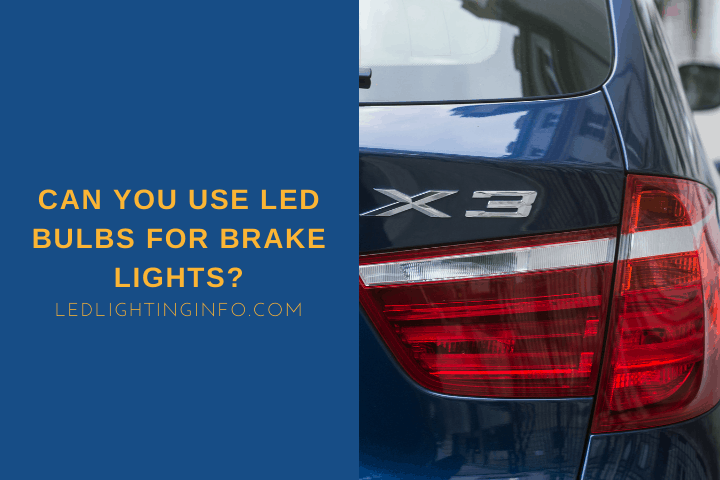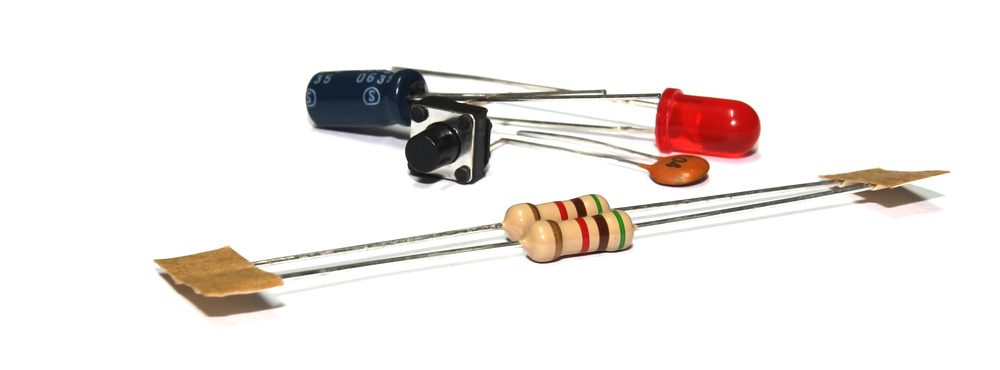Many new cars use LED bulbs instead of the older halogen type, but you might be unsure whether you can use LEDs in your older car or even if it’s a good idea.
I know that LED car bulbs are a hot topic, so I’m going to clear it up for you.
LED bulbs can be used as brake lights and even should be a preferred option due to the benefits they provide. LED taillights are brighter, faster to illuminate, and longer-lasting, making them a better option than halogens.
Still need convincing? Well I’m happy to share with you my reasons. In this article I’m going to tell you:
- Whether you definitely can install LED tail lights
- Why you should choose LED bulbs over halogen ones
- The problems you might encounter
By the end, you should already be planning on buying replacement LED bulbs!
Can Tail Lights Be Replaced With LED?

It is not too difficult to replace your tail lights with LED bulbs, as long as you find the right one to fit your car.
LED bulbs can simply be swapped into your car in most cases, although some might require extra components to get them to work properly, which I’ll cover below.
Also read: Do LED Bulbs Work In Projector Headlights?
What Are The Benefits Of LED Tail Lights?

You might be wondering why to go to the effort and expense of replacing your bulbs. So, here are four excellent benefits to using LEDs instead of traditional incandescent options.
The first of these is brightness. LED bulbs are much brighter, and so make driving your car a lot safer. By having brighter tail lights, you will be more visible in dangerous driving conditions such as heavy rain or fog.
This doesn’t mean you need to be concerned about them being too bright. LED bulbs are easier to see, but they won’t blind any drivers behind you, so you don’t need to worry about causing an accident that way. LEDs make you easier to see, not harder.
The second benefit is related to this, as LED lights illuminate faster than halogen lights. What it means is that they reach full brightness 0.2 seconds faster than incandescent ones.
That might not sound a lot, but at 60mph you’re essentially travelling 89 feet per second. Assuming a consistent human reaction time to both bulbs (from seeing the brake light switch on to pressing the brake), this means you have an advantage of around 18 feet worth of stopping distance with LEDs.
According to the AA, the full stopping distance at 60mph is 240 feet in normal driving conditions. Those extra 18 feet could be critical, as it may make the difference between the car behind you hitting you or managing to stop in time.
LED bulbs also use less power. So, when you’re sat in traffic in the dark, you don’t need to panic that your lights are being a big drain on your battery – the effect is negligent. You can drive safely even when the rest of your car is demanding a lot of electricity.
And finally, LED bulbs last longer than incandescent options. An incandescent bulb is expected to keep working for anywhere between 750 and 5,000 hours, while LED bulbs can range from 25,000 to 50,000 hours and sometimes even more.
So you don’t need to worry about being pulled over with a brake light not working that you weren’t aware of, and you won’t need to pay for replacements as frequently.
I think these benefits really make it worthwhile considering installing LED brake lights, and if you agree then consider getting yourself some quality brake lights from Lasfit lighting who specialise in automotive LEDs.
Do LED Brake Lights Require Any Additional Components?
Modern cars are very intelligent – but as I’m about to tell you, sometimes they can be too smart for their own good.
Your car is equipped with a lot of sensors. It’s these sensors that check whether everything is working in your vehicle as it should. If not, they will either illuminate the error light or, in more modern cars, tell you what the problem is on the dashboard’s display.
There are different systems. One of these is the CANBus system, which is an abbreviation of Controller Area Network Bus. Typically, this system is a great help, as it can tell you when something needs your attention and how to fix it.
The problem arises when you buy a car that doesn’t have LED bulbs installed, so you’re adding them later. One of the exciting and useful things about LEDs is that they use less power than incandescent bulbs.
But because LED bulbs draw less power, there is more resistance in the circuit. And this can make your CANBus system think that there is a problem, displaying an error message. Some systems will even cut the power to that circuit, so your bulbs won’t work when they should.
So, depending on your car, you might need additional components to make your new LED brake lights work. If you buy standard LED bulbs, you may need to install a CANBus decoder with resistors, which can help manage the circuit’s load.
However the easiest option is to buy CANBus compatible bulbs, such as this one, which have the decoder built in. These will work fine even if your car has a CANBus system, meaning you can enjoy all the benefits of LED tail lights with no worries.
Also read: Why Do LED Daytime Running Lights Flicker?
Main Problems When Installing LED Brake Lights
The main problem when installing LED brake lights is, as I’ve already mentioned, that sometimes your car’s sensors won’t recognize them as working correctly. If your vehicle is displaying an error code when installing your lights, follow my advice, and buy a decoder or CANBus-compatible bulbs.
You also need to be aware of the differences in current. An LED requires much lower voltage to work, but it will also work using only a tiny amount of current – albeit dimly. If you’re installing the bulb and it seems extra bright or flickering, you should install a resistor.
LED bulbs work on a polarity circuit only. They will only work when installed in a vehicle that is negative ground. Thankfully this is probably around 99% of cars on the road.
The issues may arise if you’re restoring an older car, which might be positive ground. If your car is a classic, you might need to convert it to the negative ground to get it to work.
The simple wiring issue may cause problems when installing an LED brake light if your car has been poorly maintained before you bought it.
Also, it is worth mentioning that tampering with wiring when trying to install LEDs can void the warranty on your new car, so consider this when you decide on a swap.
Again, if the LED bulb is dim once installed or not working, you may need some expert advice on your car’s circuitry to repair it.
Final Words
I really believe that LED bulbs are the best option for your brake lights and potentially for all the other lights in your car too. They are brighter, safer, and longer-lasting.
You might have some trouble if your car uses a CANBus sensor system, but there are simple ways around this – none of the issues I’ve mentioned should make you think LEDs are a terrible choice.
Do you already have LED brake lights? And if not, is there anything else stopping you from changing?
Let me know below.
Claim your 10% discount on the first order with Lasfit

- Replace your dim halogen headlights with bright LED
- LED lighting increases your visibility on the road during the day, and for you in the night
- Select LED lighting that is exactly designed for your car
- Buy with confidence having 45 days money back guarantee
Claim 10% off on your first order over $50, using the promo-code “FIRSTTIME10“!



